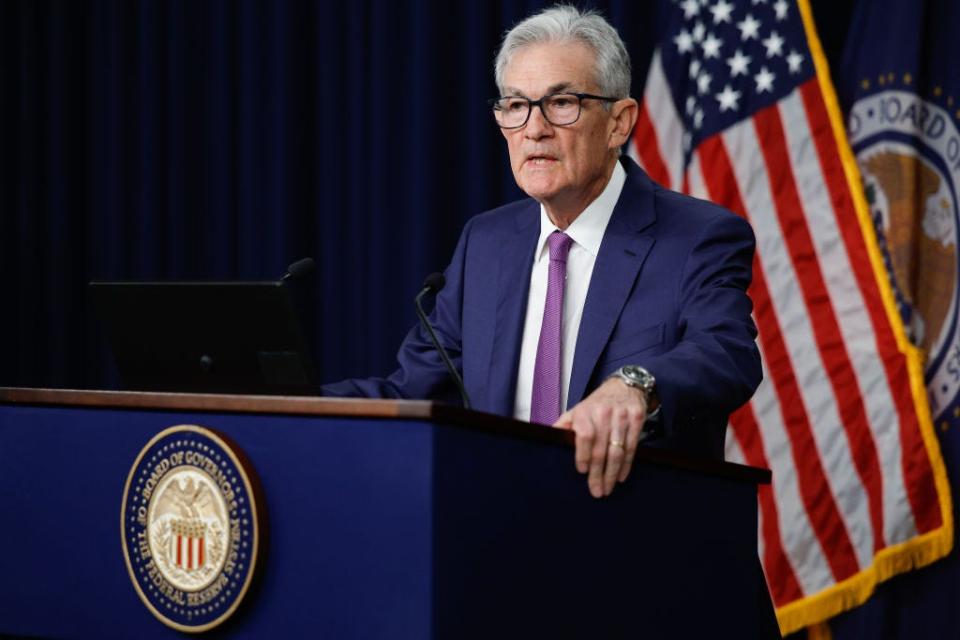The Federal Reserve held interest rates steady once again on Wednesday.
Jerome Powell said inflation data wasn’t yet where it needed to be to consider cutting rates.
He said it’d take better inflation data or “unexpected” labor-market weakness for cuts to happen.
The chair of the Federal Reserve, Jerome Powell, hasn’t said when the nation’s central bank will cut interest rates, but he has said what it will take for that to happen.
On Wednesday, the Federal Open Market Committee announced that interest rates would remain unchanged, continuing the pause that began in September following 11 consecutive rate hikes. But the announcement confirmed that rate cuts wouldn’t be happening any time soon, with the FOMC’s statement saying there had been “a lack of further progress toward the Committee’s 2 percent inflation objective.”
The consumer price index, which measures inflation, rose 3.5% year over year in March, a slight increase from the 3.2% year-over-year reading in February. Given that inflation isn’t coming down at the rate the Fed is hoping for, Powell said during his Wednesday press conference that the central bank needed to wait for more economic data before cutting rates entered the discussion.
“We’ve said that we don’t think it would be appropriate to dial back our restrictive policy stance until we gain greater confidence that inflation is moving down sustainably toward 2%,” Powell said.
“If we did have a path where inflation proves more persistent than expected, and where the labor market remains strong but inflation is moving sideways, and we’re not gaining greater confidence, that would be a case in which it could be appropriate to hold off on rate cuts,” he continued.
But he said the economy could take one of two paths that would give the Fed enough confidence to cut rates: further data to prove that inflation is moving toward the Fed’s 2% target or an “unexpected weakening in the labor market.”
The labor market has continued to be strong, dampening any urgency the Fed may have to cut rates. The US added 303,000 jobs in March, with Julia Pollak, the chief economist at ZipRecruiter, previously calling that data “the Fed’s holy grail: strong job market with non-inflationary growth.”
With inflation still above target, rate cuts aren’t yet in the picture. Powell did note, however, that it was “unlikely” there would be any interest-rate hikes, strongly indicating that rates will remain steady until the Fed gets the data it needs to begin considering relief for prospective borrowers.
The Fed’s decision to hold rates steady prompted some pushback from Democratic lawmakers who are worried that continued high rates will hurt Americans. Rep. Brendan Boyle, the top Democrat on the House Budget Committee, said in a statement, “The longer the Fed maintains these elevated interest rates, the greater the risk of harming that economic progress.”
“The Fed must remember its dual mandate and avoid keeping these rates too high for too long,” Boyle said.
Powell said he was “acutely aware that high inflation imposes significant hardship as it erodes purchasing power, especially for those least able to meet the higher costs of essentials like food, housing, and transportation.”
And he won’t risk easing up on the Fed’s restrictive policy too early.
“We believe it is restrictive, and we believe over time it will be sufficiently restrictive,” Powell said. “That will be a question that the data will have to answer.”
Read the original article on Business Insider
Credit: Source link




